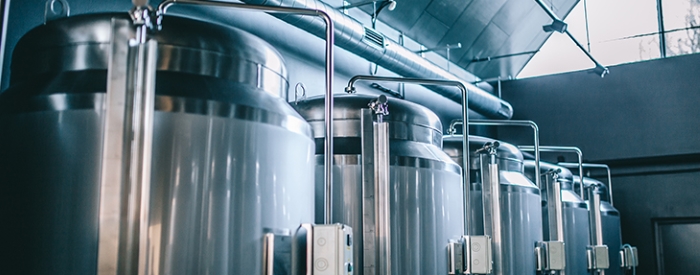The Future of Hoppy Beer Is Brewing Right Here in Nebraska
October 2018
Come August in Nebraska, you can find 25-foot tall trellises heavy with lush greenery, dotted with freshly sprouted hops. You'll also find Stacy Adams studying the quality of the green, pinecone-like blooms.
Adams, associate professor of practice in agronomy and horticulture at UNL, is leading the Nebraska Hops project. Launched in 2016 with a grant from the Nebraska Department of Agriculture, Adams and his team are testing the viability of eight hop varieties at five locations statewide.
By the year 2020, an estimated additional 11,000-11,500 acres of hops will be needed to meet the demands of the microbrewing industry.
Why the interest in hops? To help Nebraska producers generate a different kind of green—profit.
Hops are the star ingredient in brews like IPAs and pilsners, giving beers a distinctive bitter flavor and flowery aroma. By 2020, an estimated additional 11,000-11,500 acres of hops will be needed to meet the demands of the microbrewing industry. Thanks to the country's taste for craft beers, hops are a high-value commodity with major profit potential for Nebraskan producers. And best of all, the soil and moisture conditions here are promising for hop growth—putting Nebraska in a strong position to meet industry demand.
Craft brewing in Nebraska directly impacts nearly 9,000 jobs and more than $235 million in wages for a total economic impact of $465 million.
In Nebraska alone, breweries have increased from 11 in 2006 to 42 in 2016, according to the Omaha World Herald. Nebraskan-grown breweries like Zipline Brewing Co, Kinkaider Brewing Co, Lucky Bucket and others have successfully planted roots in the state, becoming a new source of tax revenue. In 2016, the Nebraska craft brewing industry generated more than $80 million in state and local taxes. Craft brewing in Nebraska directly impacts nearly 9,000 jobs and more than $235 million in wages for a total economic impact of $465 million.
And all of that monetary potential could be spurred on by a bud that fits in the palm of your hand. Thanks to research like that run by Stacy Adams and the University of Nebraska—Lincoln, Nebraska is set to put its producers in the center of a thriving industry. Cheers to that.

Discover our Podcast Series
The “Leading Nebraska” podcast shares the stories of the researchers, students, teachers and others across the University of Nebraska's four campuses who are making an impact. From teachers and doctors to engineers and ag experts, these Nebraska leaders are touching lives and making a difference.